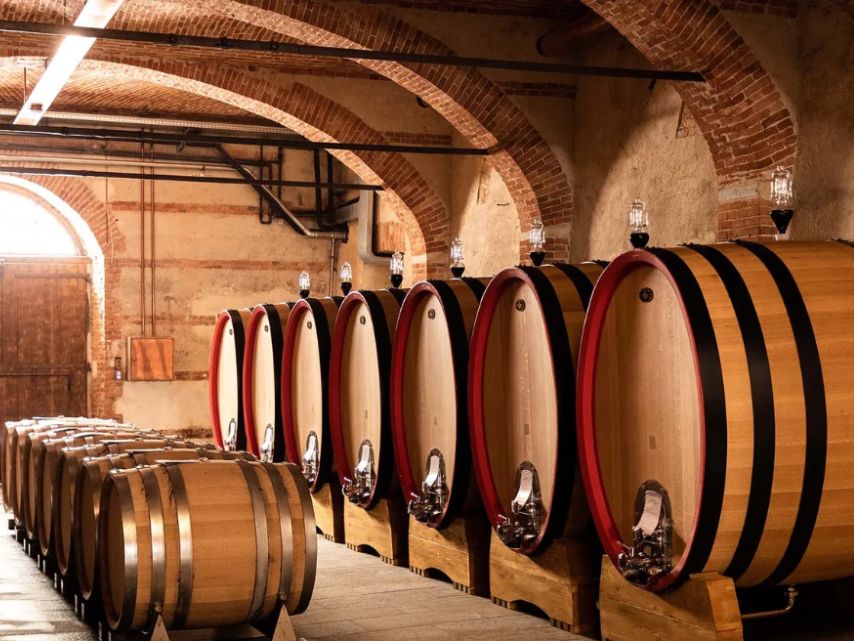Innovations in Winemaking Excellence
In the past few years, there have been many innovations that Marchesi di Barolo has implemented in order to achieve the highest level of winemaking excellence.

Sustainable Practices in the Vineyard
In the vineyard, more and more attention is being focused on sustainability; all chemical weeding treatments have been eliminated - plant protection products with a low environmental and health impact are now used instead, as are integrated pest management techniques, consociated agricultural policies, and green manure.
Advancements in Winery Techniques
In the winery, new techniques have been adopted for cooling the grapes, and there is new equipment for delicately processing wine. All animal-derived products have been eliminated, and new technologies for cleaning and sanitizing wooden barrels have been introduced.
Challenges of the Vintage 2018
The vintage 2018 presented tough climatic challenges. After an early spring, a cool and rainy period during flowering positively influenced cluster formation. Although the summer was characterized by heat and drought, it favored gradual ripening. Climatic variations in September, from warm to a sudden drop in temperature, shaped the final composition, giving vibrant acidity, refined tannins, and expressive fruit characteristics.
Barolo Cannubi 2018: A Geological Anomaly
Made exclusively from 100% Nebbiolo, Barolo Cannubi 2018 rises from an exceptional geological anomaly that defies the context of the Tortonian era. Located on a south-eastern slope, Cannubi astonishes growers with its unique soils of the Serravallian and Tortonian eras. The resulting blue-grey marls, rich in magnesium carbonate and manganese, take on a light grey hue when exposed to air. Technically known as St. Agatha Fossil Marls, or Toû, they consist of 20% sand, 30% clay, and 50% silt, creating a texture saturated with a robust limestone component (circa 10%).
Meticulous Winemaking Process
Grapes, harvested by hand, undergo a meticulous process: de-stemming, gentle pressing, and a 10-day temperature-controlled fermentation with continuous pump-overs. This method extracts distinctive aromas and color from the skins. Racking takes place after the complete fermentation of the natural sugars into alcohol. The wine then rests in concrete tanks, allowing spontaneous malolactic fermentation to occur, which concluded after two months.
Aging in Wood: The Essence of Barolo
Then the most important period in the life of Barolo begins - aging in wood. Aging in wood takes about two years; during the first year, the wine matures in small 225l French oak barriques. Here, thanks to the very high level of micro-oxygenation, polyphenolic substances (color and tannins) are stabilized, emphasizing the wine's organoleptic characteristics. In the second year, the aging process continues in large Slavonian oak barrels. Due to the latter’s more delicate wood effect, this harmonizes all the final organoleptic characteristics of the wine, resulting in a balanced and harmonious synthesis of the soils of Barolo.











